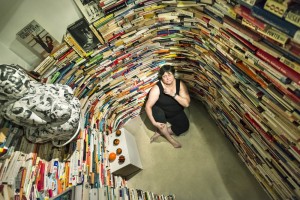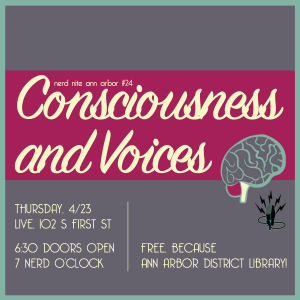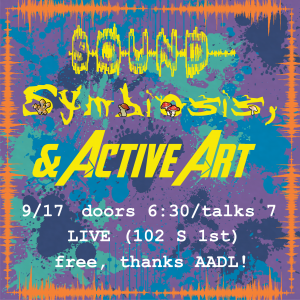
This month our topics go from down in the dirt (plant and fungi symbiosis!) to long-distance sounds to local examples of art in action. What our three featured nerds have in common, however, is that they each have a passion for their topic and want you to understand it too! So, whether you consider yourself an art aficionado, a sound geek, a plant-lover or beyond, we’ve got plenty of new stuff for you to pick up while you’re tipping back a beer. Grab a drink, grab a friend, and we’ll see you at LIVE on September 17th!
When: September 17, 2015, doors at 6:30 pm, talks at 7 pm!
Where: LIVE, 102 S. First St. in Ann Arbor
$$$: No cover! Big thanks to the Ann Arbor District Library!
Brian Worthmann — The Sound Heard ‘Round the World’
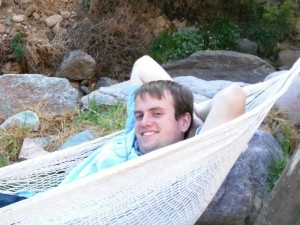
In our daily lives, we’re used to sound traveling as short as a fraction of an inch (like music from headphones) to as far as several hundred yards (like a football game heard several blocks away). But, over even larger distances, like tens, hundreds, or even thousands of miles, sound can do some very weird and unexpected things. We’ll talk about what sound does, why it does it, and how those surprising behaviors may have influenced the course of history.
About Brian: Worthmann is a PhD student at U of M in Applied Physics studying underwater acoustics and signal processing and was a participant in the
RELATE 2015 workshop. When not doing underwater acoustics research, he can be found learning, teaching, or binge-watching Netflix.
Alex Taylor — Underground Alliances

Nearly all plants form intimate symbiotic partnerships with fungi called Mychorrhizae. These fungi grow in elaborate webs through the soil, and then into the plan roots, growing even inside the plant cells, where the plant and fungus have struck a fabulously successful deal. The terms of this deal are straightforward: a trade of sugar for mineral nutrients that plays to the strengths and weaknesses of each partner. Mycorrhizae helped early plants get a toehold on land, and to this day, the vast majority of plants across the globe thrive thanks to their fungal partners. The world would be a barren place without this ancient and strange symbiosis.
About Alex: Alex is a Ph.D student in Ecology and Evolutionary Biology, studying how plants evolved the ability to recognize and partner with bacteria and fungi in the soil. Most days, this involves sitting at a computer and running algorithms on the genome sequences of different plants. He also loves talking and writing about the spine-tingling majesty of science, and co-founded the blog “Thought and Awe” to do just that. In his spare time, Alex is into camping, gardening, and talking about the big stuff over a beer. Find him on Twitter at @ATayters.
Brenda Oelbaum – Stitch and Bitch: Hopefully a Comedy
Oelbaum, current President of the
National Women’s Caucus for Art, will share some of the ins and outs of her work in organizing a national arts non-profit and what that has to do with embroidering little black velveteen bags with gold numbers while she juggles those challenges and troubles. She invites members of the audience to fill the bags she provides with a problem to add to the mound of problems in her upcoming social practice performance and installation at POP-X Ann Arbor.
Pens and paper will be provided for attendees to write down their most troubling problem to contribute to her already heavy load. Contributors can then come by the installation running October 15-25, read some problems of others, and decide if they want to take their own bag back, or buy someone else’s problem as a souvenir.
 What’s all the “Fe”ss about? We’re not the only organisms that need Iron, which can mean we have some competition in getting the nutrients we need. Ada Hagan breaks down the ins and outs of Iron and bacteria. Even the most well-nourished body and brain can still learn a LOT about consciousness and psychoactive substances. Research on psychedelics is only just now recovering fromits implosion in the 70s, following the heydey of LSD research in the 60s. What does our current understanding of the brain tell us about the psychadelic experience? Dr. George A. Mashour walks us through a little research history and leads us through his present exploration of ketamine.
What’s all the “Fe”ss about? We’re not the only organisms that need Iron, which can mean we have some competition in getting the nutrients we need. Ada Hagan breaks down the ins and outs of Iron and bacteria. Even the most well-nourished body and brain can still learn a LOT about consciousness and psychoactive substances. Research on psychedelics is only just now recovering fromits implosion in the 70s, following the heydey of LSD research in the 60s. What does our current understanding of the brain tell us about the psychadelic experience? Dr. George A. Mashour walks us through a little research history and leads us through his present exploration of ketamine.
Mark your calendar, grab a friend, and say hey to a fellow nerd! We’ll see you at LIVE with a frosty beverage in hand for August’s edition of Nerd Nite!
When: August 20: 6:30 doors, 7pm nerd space and time
Where: LIVE, 102 S First St, Ann Arbor
$$$: NO COVER because Ann Arbor District Library!
The Battle for Iron: What’s all the “Fe”ss about? – Ada Hagan
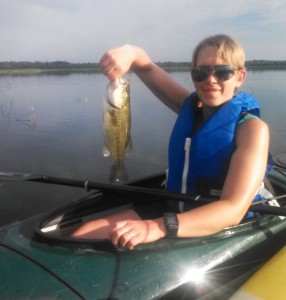
989.535.5
Iron is an important nutrient that we all make sure to get enough of in our diets. Did you know bacteria need it too though? Come learn about the battle invading bacteria wage against your body over iron atoms. Those bacteria have some pretty cool tricks up their sleeves, but so do we! That is, if we learn enough about it…
About Ada: Ada is a PhD student in Microbiology and Immunology and spends her days doing recon on the strategies bacteria use to invade our bodies. She is passionate about communicating science because she feels the more we all know about science and how things work, the better choices we can make about our lives. In her spare time she enjoys being outdoors with her dogs, and fishing with her husband. Ada is also involved with MiSciWriters, a student-run science writing blog.
The Psychedelic Brain – Dr. George A. Mashour
Psychoactive substances have been known since antiquity and modern psychedelic subculture

underwent an explosion in the 1960s followed by an implosion in the 1970s. More recently, the neuroscience of psychedelic drugs has emerged from the shadows of a dark past. What are the neural correlates of the psychedelic experience? What does this phenomenology and neurobiology tell us about the functioning of the brain? I will discuss these questions as well as my own research on ketamine.
About George: Dr. Mashour is a neuroscientist, anesthesiologist and the founding director of the Center for Consciousness Science at the University of Michigan.
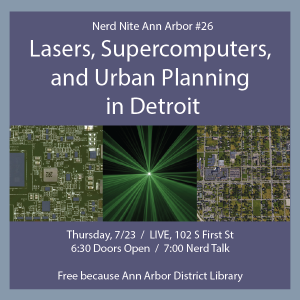 We have an awesome trio of talks on tap this month! Laser artist Mike Gould gives us the skinny on building amazing light displays (with demos!), tech wizard Dave Strenski takes us on a historical tour of uber-powered computers, and urban planner Margi Dewar talks about the future of Detroit. You don’t want to miss it! So grab a friend, grab a beer, and cool your heels at Nerd Nite Ann Arbor!
We have an awesome trio of talks on tap this month! Laser artist Mike Gould gives us the skinny on building amazing light displays (with demos!), tech wizard Dave Strenski takes us on a historical tour of uber-powered computers, and urban planner Margi Dewar talks about the future of Detroit. You don’t want to miss it! So grab a friend, grab a beer, and cool your heels at Nerd Nite Ann Arbor!
When: July 23: 6:30 doors, 7pm nerd stuff
Where: LIVE, 102 S First St, Ann Arbor
$$$: NO COVER because Ann Arbor District Library!
Runs with Lasers – Mike Gould
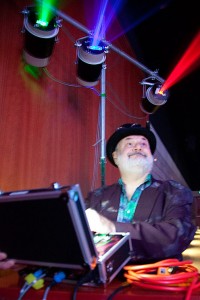 Local laser artist Mike Gould discusses his recent experiences with the Illuminatus Lasers Troupe, including:
Local laser artist Mike Gould discusses his recent experiences with the Illuminatus Lasers Troupe, including:
– The Quest for Mystic Fire – Lasers at Saline Celtic Festival (because, of course).
– Talks with Lasers lecture/demo to educate kids and families to the wonders of coherency.
– Tetraptych: 4 Panels, 12 Lasers, One Wall art piece for DLECTRICITY 2014
– L is for Laser, his science museum piece.
Mike has also done lasers for the UM Stadium half-time show during a night game. (Notre Dame, we won). He’s go an upcoming entry into the Ann Arbor Art Center’s tech+art exhibit, and has made appearances at various Maker Faires, Art Prize, Ignite, FoolMoon, etc.
For more about Mike, wander over yonder:
Calculating 10^18 Results per Second – Dave Strenski
 The world of high performance computing is changing. This presentation will run through a short history of computing highlighting the different types of computations used in computing’s past, including vectorization, parallelization, accelerators, and reconfigurable computing. From this historical perspective, the discussion will lead to what’s needed for the future to reach exa-scale (10^18 floating point operation per second) computing. It will also cover the types of applications that need exa-scale computing and the merging of high performance computing and data analytics. More deets: www.Cray.com and www.SolarYpsi.org.
The world of high performance computing is changing. This presentation will run through a short history of computing highlighting the different types of computations used in computing’s past, including vectorization, parallelization, accelerators, and reconfigurable computing. From this historical perspective, the discussion will lead to what’s needed for the future to reach exa-scale (10^18 floating point operation per second) computing. It will also cover the types of applications that need exa-scale computing and the merging of high performance computing and data analytics. More deets: www.Cray.com and www.SolarYpsi.org.
Detroit: Planning a City After Abandonment – Margi Dewar
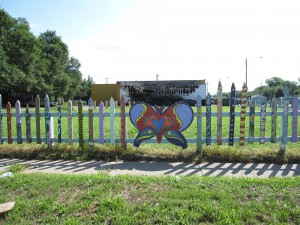
Urban planning as a field focuses on managing development to shape the effects of growth on cities. But what can planners do in cities like Detroit where developing, redeveloping, rebuilding, and revitalizing are
not possibilities? I will lay out directions with a few examples for a different kind of urban planning.
 Summertime and the livin’ is nerdy… June brings us an awesome trio of talks about the badass history of roller derby, the development of the science story from bright idea to blog article, and a primer on the last 75 years of history in Ypsilanti. Gonna be a great edition of NNA2, so grab a friend, grab a drink, and join us for an awesome Thursday night!
Summertime and the livin’ is nerdy… June brings us an awesome trio of talks about the badass history of roller derby, the development of the science story from bright idea to blog article, and a primer on the last 75 years of history in Ypsilanti. Gonna be a great edition of NNA2, so grab a friend, grab a drink, and join us for an awesome Thursday night!
When: June 18: 6:30 doors, 7pm nerdins
Where: LIVE, 102 S First St, Ann Arbor
$$$: NO COVER! Ann Arbor District Library rulez!
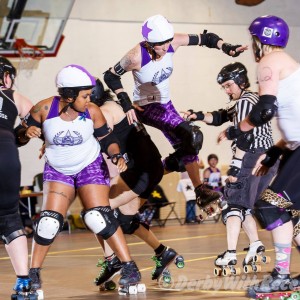
Susan B. Slamthony and Queen McLightning — A Short History of Nearly Everything Roller Derby Related
Learn the history of roller derby from the 1920s to today, how the game is played and what’s been happening for the sport locally.
Find ’em elsewhere, too: @a2derbydimes or Facebook:
AnnArborBrawlStars, A2D2YV, A2D2ABC
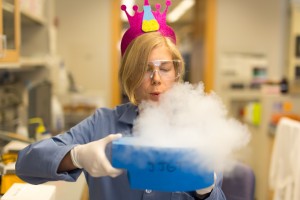
Plot twists and Revelations: The Story of Science — Veronica Taylor
When you think of science, what comes to mind? For many people, science springs to mind a collection of facts they tried to memorize for various exams. I want to show another side of science: the story of science. In my talk, we’ll take a short journey through the drama of the scientific process and learn about how scientific ideas evolve and are communicated. I hope you will leave with a new appreciation of science and what we really learn from research.
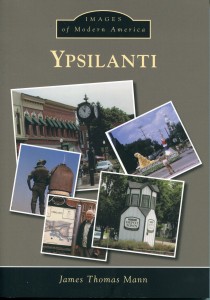
Ypsilanti History — James Mann
Local historian James Mann returns for his fourth Nerd Night talk, and will be speaking on his new book, Ypsilanti, part of the Images of Modern America series from Arcadia Publishing. This is a picture history of the city of Ypsilanti from the 1960’s to the present. James will speak on how Ypsilanti got the most easily misspelled name in the state, the Michigan Murders, and tell the true story of Rosie the Riveter. There is more to Ypsilanti than the Water Tower! Copies of Ypsilanti will be available for purchase.
This month our Nerd Nite speakers will be talking about things that most of us have (at least most of the time). We’ll let a philosophy scholar-turned neuroscientist walk us through his work on consciousness, and a seasoned radio vet remind us why our own voice might just be more important than we’ve ever considered.
So get a bit mindful, join us on Thursday, April 23 at LIVE for Nerd Nite A2 #24, and use that voice of yours to say hello to a bunch of other great, curious nerds!
When: April 23rd, 2015, doors at 6:30pm, talks at 7pm!
Where: LIVE, 102 S First St, Ann Arbor
$$$: NO COVER! Thanks a million, Ann Arbor District Library!!
Brian H. Silverstein – The Science of Consciousness
Ever wonder what it means to be conscious? Consciousness defines our very existence – we experience it every waking (and dreaming) minute of every day, yet it is one of the most challenging phenomena to define. For thousands of years, humans have posited theories of awareness. Over the last half century, we have finally developed the tools to empirically investigate consciousness.
In this talk, we’ll learn about how theories of consciousness have developed over time and see an overview of the cutting edge methods scientists use to create empirically informed models of consciousness. Brian is affiliated with the
Center for Consciousness Science at the University of Michigan.
Brian H. Silverstein:
Brian has been studying consciousness for the better part of a decade. Starting from philosophy, he eventually decided to empirically test theories instead of just talking about them. Now he uses computational neuroscience to study the neurobiology of consciousness with the Center for Consciousness Science at the University of Michigan. Originally from New York, he now lives in Michigan. When he’s not sciencing, he’s usually drawing, cooking, or playing the piano poorly.
Kyle Norris – Why you should fall in love with your own voice
The relationship we have with our voices is incredibly intimate. And also very powerful. Our voices are an underutilized tool that can help us do a lot of things and can help us make connections with other people. I’ll help everyone think about their voice in a new way, and show them some good tips for maximizing this personal and powerful tool.

March may have roared in like a lion, but the awesome nerds of Ann Arbor are howling back! Up this month: the history of cataract surgery, how to be a great DJ in 5 simple steps, and how 80s cartoons can teach you to be a better writer.
Friends, beers, and nerdery–can you find a better Thursday night? See you this month at Nerd Nite Ann Arbor!
When: March 19, 2015, doors at 6:30pm, talks at 7pm!
Where: LIVE, 102 S First St, Ann Arbor
$$$: NO COVER! Thanks a million, Ann Arbor District Library!!
 Zvi Kresch – Sweet is the Light: Curing Blindness Through the Ages
Zvi Kresch – Sweet is the Light: Curing Blindness Through the Ages
Cataracts are the most common cause of blindness on the planet. Long before anesthesia or antiseptics, cataract surgeries were being performed. This talk will touch on the evolution of the procedure from ancient to modern times.
A few of the questions we’ll answer along the way: Why is the sky blue? Is staring at an eclipse really bad for your eyes? Where do orange carrots come from?
About Zvi Kresch:
Zvi Kresch is a faculty member at the UM Kellogg Eye Center. Prior to coming to UM, he spent a year traveling with his wife and practicing ophthalmology abroad with the The Himalayan Cataract Project. He was exposed to different types of cataract surgery and became very interested in the procedure’s origins. When not studying eyeballs, Zvi enjoys chess, making kombucha and playing the harmonica.
 Rolando Calip, Jr. AKA DEFTMIX – Elements of Style – How to be a Great DJ in 5 Simple Steps
Rolando Calip, Jr. AKA DEFTMIX – Elements of Style – How to be a Great DJ in 5 Simple Steps
In this talk, DEFTMIX uses concepts from Strunk and White’s classic college textbook, “Elements of Style” to distill 5 Simple Steps to becoming a “Great DJ”.
About Rolando Calip, Jr. AKA DEFTMIX:
Rolando Calip, Jr. is a 20 year DJ veteran residing in Ann Arbor, Michigan. He has spent the last 2 years as the Nightlife Director/Saturday DJ Resident for Live Nightclub. Before moving to Ann Arbor in 2011, he lived in NYC for 10 years; DJing, curating music for hospitality groups, and managing DJs. Music has taken him all over the world; most recently Manila, Philippines; where he performed at Black Market Nightclub on NYE 2015. Follow him on Instagram: @deftmix
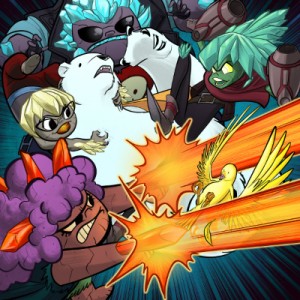 Jerzy Drozd – Knowing is Half the Battle: What 80s Cartoons REALLY Teach Us
Jerzy Drozd – Knowing is Half the Battle: What 80s Cartoons REALLY Teach Us
80s cartoons were nothing more than half-hour toy commercials with a sprinkle of moralistic preaching to sweeten the pill for parents, right? Cartoonist Jerzy Drozd explores 5 writing tips one can glean from a closer examination of the cartoons of our youth.
About Jerzy Drozd:
Jerzy Drozd is one of the artists of The Warren Commission Report. He leads cartooning workshops for children and teens in libraries and schools; podcasts prolifically about comics and how to make them at ComicsAreGreat.com, KidsComicsRevolution.com, and LeanIntoArt.com. He wrote and drew the graphic novel The Front, has worked on Antarctic Press’s Ninja High School and PPV: Pay- Per-View (which he cocreated with Tom Root, writer of Cartoon Network’s Robot Chicken), and has drawn special projects for Marvel Comics, Glencoe/McGraw-Hill, VIZ Media, and others. He lives in Ann Arbor with his wife and two cats.
Check your assumptions about where UM students live (and vote), consider the role games and related storytelling play in our lives, and wrestle with the question of why the hell we haven’t cured cancer yet.
Sure, this sounds like a LOT to consider, but we’ll have some adept, smart, and irreverent guides to the topics, all in February’s super-packed edition of Nerd Nite!
Grab a friend, grab a drink, and join us for another great edition of Nerd Nite!
When: February 19, 2015, doors at 6:30pm, talks at 7pm!
Where: LIVE, 102 S First St, Ann Arbor
 Beyond South U: Where Students Live and Vote in Ann Arbor
Beyond South U: Where Students Live and Vote in Ann ArborAusten Hufford, Pat Sier
While we all think we know where U of M students live, it’s harder to find out than you’d think. Austen and Pat will go through their method of coming up with a solid picture, and discuss what this means for students and residents alike every election cycle in Ann Arbor.
About Austen and Pat:
Austen and Pat are U of M seniors studying economics and public policy respectively. Austen will be working in journalism this summer at the Wall Street Journal and Pat will be working in Chicago at a marketing technology company. Find Austen on twitter: @austenhufford
 Why We Watch: How Everything From Football to Mario entrances us
Why We Watch: How Everything From Football to Mario entrances usRyan “Gorgon” Jurado
Games are a form of storytelling as old, if not older, than language itself, but we rarely stop to think why some games succeed and some fail. What do college athletics–which, despite being non-professional games earn nearly $1 billion per year–have in common with a fifteen-year-old Pakistani boy playing video games in China for the first time… to the tune of 770 thousand live viewers and $3 million in prizes?
About Ryan “Gorgon” Jurado:
With professional experience in publishing, music performance, gaming, podcasting, and three majors split across two undergraduate degrees, Ryan “Gorgon” Jurado is what you might call a renaissance nerd. These days, he spends his time studying the burgeoning realm of online spectator games, often called eSports, in which he is a data analyst and live commentator for audiences of tens of thousands. You can find him on twitter: @gotcowdota
Why the hell haven’t we cured cancer yet?
Yijung Yang
As one of the leading causes of death in the US, cancer has long been the focal point of intense study and public interest. However, after millions of dollars and countless hours spent on cancer research, the silver bullet cure remains elusive. Have you ever wondered why? Join us as we delve into the intricate nature of the disease and the difficulties physicians and scientists face when treating a patient with cancer. Along the way, we will discuss the biological origins of cancer as well as its pathology, epidemiology, and potential therapeutic options currently under scrutiny.
About Yijung Yang:
Yang graduated from University of Maryland with a degree in Physiology and Neurobiology. Then, after a two-year research fellowship at the National Institutes of Health, moved to Ann Arbor to join the MD/PhD program at the University of Michigan, and is currently in the research phase of graduate training under the guidance of Dr. Diane Simeone, director of the Translational Oncology Program at UM.

Nerd Nite welcomes 2015 with a roster spanning history, sound and action!
We all like a good story now and then, right? All the better if that story is something from our city’s collective past. Local history geek & author Patti Smith will take us on a tour of the Good the Bad and he Ornery in Tree Town’s past. Like the sound of that? Carl Engelke will expose us to different sounds — heroic trumpet fanfares — as he considers music and physics in the natural history of the trumpet. Finally, who couldn’t use an extra boost of self-confidence? Martial arts trainer Sal Sanfratello will illustrate how direct action and experimentation may help us become a little more balanced and courageous in our everyday lives.
Ponder some our past, consider your favorite fanfare, and take action — grab a beer and say hi to your fellow nerds!
When: January 29th, 2015, doors at 630pm, talks at 7pm!
Where: LIVE, 102 S First St, Ann Arbor
Moola: FREE! Thanks, Ann Arbor District Library!
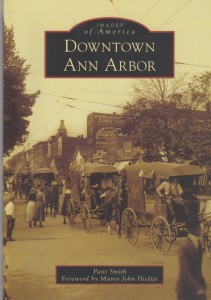 Patti Smith – Telling Tales of Local History: the Good, the Bad, and the Ornery
Patti Smith – Telling Tales of Local History: the Good, the Bad, and the Ornery
Using pictures from her book, Images of America: Downtown Ann Arbor, local history geek Patti Smith will take you on a tour of our not-so-distant past where we will visit with store men, shoe men, and some very irate students.
About Patti Smith:
Special education teacher, former lawyer, local history geek, loves writing and crossword puzzles.
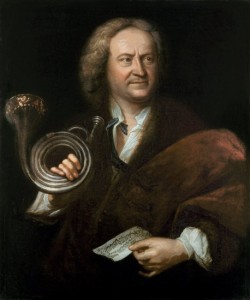 Carl Engelke – A Natural History of the Trumpet
Carl Engelke – A Natural History of the Trumpet
Unless you’ve been living under a rock for the last 35 years, you’re familiar with the heroic trumpet fanfares that catapult the audience from the theater to a long time ago in a galaxy far, far away in Star Wars. But how did the modern trumpet come to look and sound the way it does today? The answer traces back to its primordial beginnings as “found objects” that gradually evolved more and more sophisticated technology through the centuries, influencing composition along the way. Brace yourselves for a combination of music and physics as we chart the natural history of the trumpet.
About Carl Engelke:
Carl had many, varied interests throughout the years, and he still sometimes wonders what he wants to do when (if) he grows up. He studied trumpet performance in college at Indiana University and the Royal Academy of Music in London, and performed with the Civic Orchestra of Chicago upon graduation. Currently, as a completely logical next step, he is an MD/PhD student at the University of Michigan Medical School, where he studies how RNA influences the development and progression of prostate cancer.
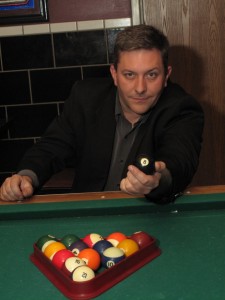 Sal Sanfratello – Creating Self Confidence through Direct Action
Sal Sanfratello – Creating Self Confidence through Direct Action
We as nerds live in two worlds: one of thought, and one of action. Come and talk about the value of action, and ways we can create more balance, and more courage, in our lives through safe and effective experimentation in our many and diverse interests. don’t just imagine it: try it!
About Sal Sanfratello:
Aegis’ founder and lead instructor, Sal Sanfratello, is a modern Renaissance man. He holds undergraduate degrees in International Relations and History from Purdue University and earned his MBA online from Phoenix University while working full-time as a project manager and managing and teaching classes at Aegis.
He has extensive military training courtesy of his high school years at Xavier Academy, and he is the latest of a very, very long line of Sicilian swordfighters trained in a style that is more than 1,000 years old.
These days Sal is concentrating on his professional career, but he still oversees the school and makes appearances at events like World Steam Con. In addition, every sword fighter who graduates from Basic can look forward to the school tradition of facing Sal for his or her first fight
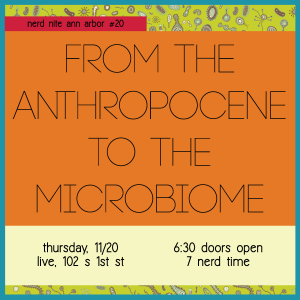
From the big picture of the anthropocene to the very very little (but critically important and all around us) organisms that make up the human microbiome, this month’s Nerd Nite speakers will share big questions and recent research related to complex relationships.
James Arnott of the Aspen Global Change Institute will fill us in on just what the $X#! the anthropocene is, and why it’s an important concept to consider at this particular moment of human history.
Pat Schloss, a University of Michigan professor lives on a family farm (home to sheep, cows, pigs, chickens, and seven Homo sapiens and their microbiome!) gets paid to see bacteria everywhere and spends a lot of time “obsessing about whether we should be obsessing about them.” He’ll walk us through the human microbiome, and what we know and have yet to find out.
When: November 20th 2014, doors at 630pm, talks at 7pm!
Where: LIVE, 102 S First St, Ann Arbor
Moola: FREE! Thanks, Ann Arbor District Library!
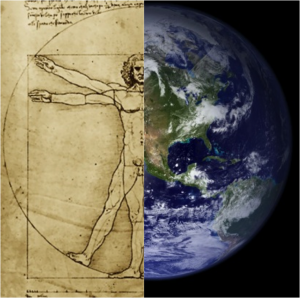 James Arnott – What the $X#! is the anthropocene? An extraordinary moment in Earth and human history
James Arnott – What the $X#! is the anthropocene? An extraordinary moment in Earth and human history
This talk will introduce you to the extraordinary moment in Earth and human history that you (yes, you) are living through. We’ll look at why now is different than before and why the future is dependent on a unlikely species that grew out of a cave into a skyscraper and now shapes the future of earth, wind, and fire. The anthropocene is now—and here to stay—so come learn what we know, what you should know, and what we all must do!
About James Arnott:
James is a student, researcher, and enthusiast for thinking big. He is pursing a PhD at the School of Natural Resources and Environment at the University of Michigan. Meanwhile, he is Program Director of the Aspen Global Change Institute, an interdisciplinary think tank for global environmental issues.
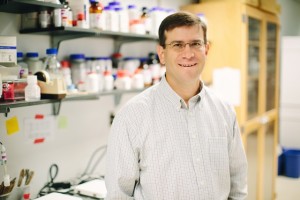 Pat Schloss – The Microbiome: Good for What Ails You
Pat Schloss – The Microbiome: Good for What Ails You
I’ll discuss what we currently know about the human microbiome, but mostly I’ll point out a lot of really cool things that we don’t have any explanations for and how we’re going about trying to understand what’s going on.
About Pat Schloss:
I get paid to see bacteria everywhere and spend a lot of time obsessing about whether we should be obsessing about them. I have been a professor at the University of Michigan since 2009 where I study the human microbiome. My family has a farm in Webster Township where we raise sheep, cows, pigs, chickens, and seven Homo sapiens and their microbiome.

Join us as we venture into dark and shadowy territory with mysterious deaths, talk of zombie and their favorite food — brains!
We’re lucky to have two NNA2 alumni back with us this month:
Historian James Mann walks us through the “Coroner’s Court,” a practice used long ago to investigating deaths which occurred under murky circumstances.
Anatomist Susan Starr fills us in on just what’s in your head — and why brain-eating zombies would probably be malnourished!
Adding to the Halloween-y set, RELATE-r and researcher Katherine Prater will take us through the tingling, sweating, and heart-racing topic of fear and the brain — even toughing on just how scientists examine it in the lab.
When: October 23rd, 2014, doors at 630pm, talks at 7pm!
Where: LIVE, 102 S First St, Ann Arbor
Moola: FREE! Thanks, Ann Arbor District Library!
 James Mann – Coroner’s Court
James Mann – Coroner’s Court
The Coroner’s Court is a now rarely used legal procedure used to investigate a death under mysteries circumstances. The County Coroner, or medical examiner, would impanel a jury, usually six men, who would view the remains, hear witnesses and study the evidence. This was not a trial, as no one was then accused of a crime. The jury was to determine, first, if the person was dead, and if dead, was the cause of death due to, natural causes, accident, suicide or murder. When the jury determined the cause of death was due to accident or murder, then, if possible, name the one most likely to have caused the death. Sometimes the jury returned a verdict of: “due to person or persons unknown to us at this time.”
About James Mann:
James Mann is a local historian and the author of eight published books on local history. His books include Wicked Washtenaw County, Wicked Ann Arbor and Wicked Ypsilanti. He hosts Lantern Tours of Highland Cemetery, in Ypsilanti, the last two weeks of October.
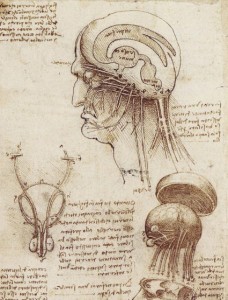 Susan Starr – What is in your Brains: Why Zombies are Malnourished
Susan Starr – What is in your Brains: Why Zombies are Malnourished
Ever wondered what your brains are made up of, beyond the Beginning Biology textbook discussion? Ever wonder how Zombies could possibly get enough nutrition from one food source? Ever heard that ridiculous statement that we only use 10% of our brains? Hopefully you said yes to at least one of these, because that is what you will hear about in my talk. I will explore some real neuroscience, but mix in some Halloween fun.
About Susan Starr:
I am a born teacher. Maybe I just like to think I’m always right. Anyway … I have taught at the college level for almost 30 years. I have taught just about every Biology class you can think of (Medical Parasitology anyone? Economic Zoology? Neuroanatomy?), but spent the majority of my career teaching Human Anatomy and Physiology to future nurses, doctors, physical and occupational therapists, and now Physician’s Assistants in the new EMU program. I LOVE my new job … like the cherry on top of a great career. My favorite places in the world are the woods (especially if mountains and/or water are nearby), my home & garden, and my Anatomy (cadaver) Lab. I’ve been married over 35 years to the same (very patient) guy, and we have a wonderful, compassionate son and daughter-in-law on the East Coast and a beautiful, talented daughter on the West Coast.
 Katherine Prater – Fear + Brains ≠ Zombies
Katherine Prater – Fear + Brains ≠ Zombies
Have you ever been cornered by zombies and not had a shotgun on hand? Did your palms sweat and your breathing increase? If so, you’ve experienced fear! Fear is one of our most basic emotions, and it is necessary for living beings to avoid undeath. During this talk, we will discuss the brain regions that help individuals determine what and when to fear. There will also be a demonstration of how scientists study fear in the laboratory. If you are interested in feeling the back of your neck prickle on the week before Halloween, you’re probably not a zombie, so this talk is for you!
About Katherine Prater:
Katherine adores science (both with and without the fiction). When she is not sciencing with her labmates, Katherine can often be found playing computer games with her husband, playing board games, or reading a good book. She also may be found playing with her “love”bird, known to some as “the destroyer of worlds.” Recently, Katherine has had the great pleasure of being a co-founder of RELATE, an organization at the University of Michigan that endeavors to teach STEM graduate students to better explain their research to lay-audiences.



